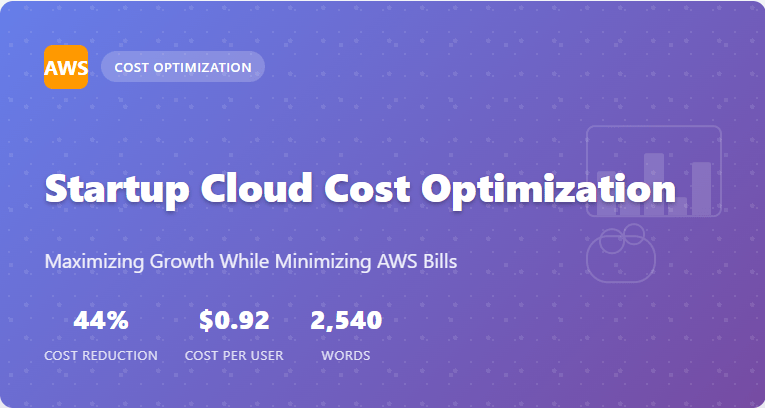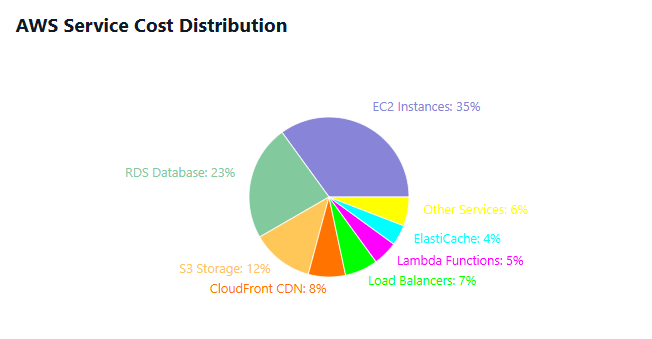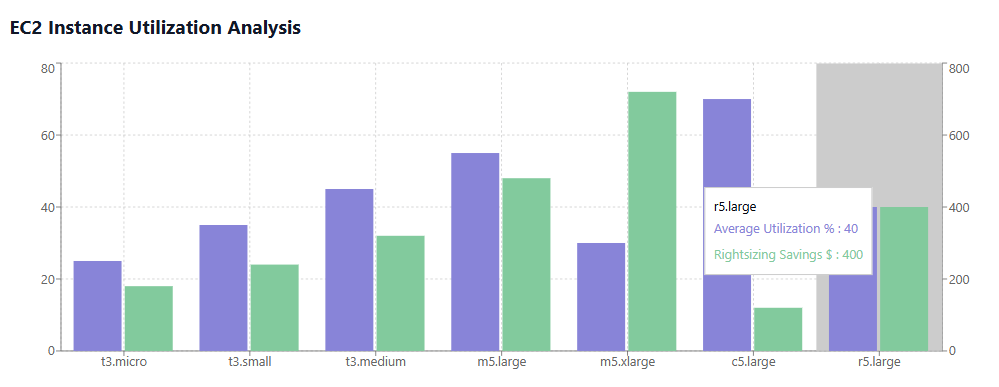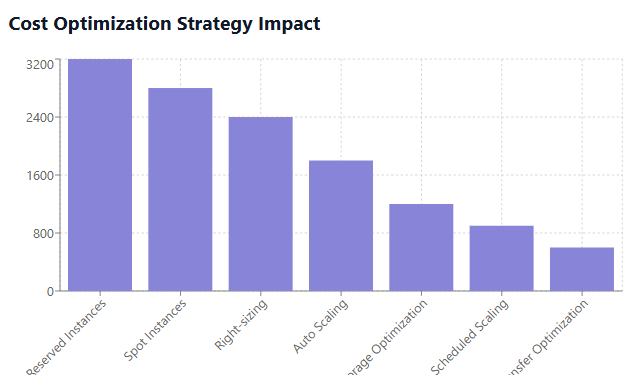
Startups face a unique challenge in today’s cloud-first economy: they need to scale rapidly while maintaining strict control over operational costs. With venture capital funding becoming increasingly selective and economic uncertainty demanding fiscal responsibility, understanding how to optimize cloud spending has become critical for startup survival and growth. This comprehensive guide explores proven strategies for startup cloud cost optimization, specifically focusing on maximizing growth while minimizing AWS bills.
Understanding the Startup Cloud Cost Challenge
Modern startups rely heavily on cloud infrastructure to build, deploy, and scale their applications quickly. However, this dependence often leads to surprising monthly bills that can drain precious resources meant for product development and market expansion. According to industry research, organizations use about 80 applications on average, with cloud spending representing a significant portion of operational expenses for technology-driven companies.
The challenge becomes particularly acute for startups because they often lack dedicated DevOps teams or financial operations (FinOps) specialists who can monitor and optimize cloud usage effectively. This gap in expertise frequently results in over-provisioned resources, unused services, and missed opportunities for cost savings that could be redirected toward growth initiatives.
Common Cloud Cost Pitfalls for Startups
Uncontrolled Resource Provisioning Startups often provision cloud resources during rapid development phases without implementing proper governance controls. Developers may spin up instances for testing, forget to terminate them, or choose oversized resources “just to be safe.” This behavior, while understandable during crunch times, can lead to substantial unnecessary expenses.
Lack of Monitoring and Alerting Without proper monitoring systems in place, startups frequently discover cost overruns only when they receive their monthly bills. This reactive approach prevents timely optimization and can result in budget blow-outs that impact other critical business operations.
Poor Resource Utilization Many startups experience significant underutilized instances due to workload patterns that don’t align with provisioned capacity. Development environments running 24/7, staging servers that are rarely used, and production instances sized for peak loads during normal usage periods all contribute to inefficient spending.

Essential Cloud Cost Management Strategies for Startups
1. Implement Comprehensive Cloud Monitoring
Effective cloud cost management for startups begins with visibility. You cannot optimize what you cannot measure, making monitoring the foundation of any cost optimization strategy.
Real-Time Cost Tracking Implement tools that provide real-time visibility into your cloud spending patterns. This includes monitoring costs by service, project, team, and environment to understand where your money is going and identify optimization opportunities quickly.
Usage Analytics Track resource utilization rates across your infrastructure to identify underutilized instances and oversized resources. This data becomes crucial for rightsizing decisions and capacity planning.
Automated Alerting Set up automated alerts for cloud cost anomalies to catch unexpected spending increases before they impact your budget significantly. Configure threshold-based alerts for daily, weekly, and monthly spending to maintain control over your cloud expenses.
2. Adopt FinOps Practices Early
FinOps in cloud computing brings together finance, operations, and engineering teams to make data-driven spending decisions. For startups, implementing FinOps practices early establishes a culture of cost consciousness that scales with the organization.
Cross-Functional Collaboration Create regular reviews where engineering, finance, and product teams discuss cloud spending in the context of business goals. This collaboration ensures that cost optimization efforts align with product development priorities and revenue objectives.
Cost Allocation and Chargeback Implement tagging strategies and cost allocation methods that allow you to track spending by project, team, or customer. This granular visibility enables informed decisions about resource allocation and helps teams understand the financial impact of their technical choices.
Predictable Budgeting Develop forecasting models that account for growth patterns and seasonal variations in your application usage. This predictive approach allows for better budget planning and helps prevent surprise expenses during scaling periods.
3. Optimize AWS Resource Selection and Sizing
Instance Rightsizing Regularly analyze your EC2 instances to ensure they match your actual workload requirements. Many startups begin with general-purpose instances and never revisit their choices as workload patterns become clearer. Use AWS CloudWatch metrics to identify instances with consistently low CPU, memory, or network utilization.
Reserved Instances and Savings Plans For predictable workloads, AWS Reserved Instances and Savings Plans can provide significant cost reductions compared to on-demand pricing. However, startups should carefully evaluate their commitment levels to avoid over-committing to resources they may not need as their business evolves.
Spot Instances for Development and Testing Leverage AWS Spot Instances for non-critical workloads such as development environments, testing, and batch processing. Spot Instances can provide up to 90% cost savings compared to on-demand instances, making them ideal for cost-conscious startups.

4. Implement Automated Cost Optimization
Auto-Scaling Configuration Configure auto-scaling groups to dynamically adjust capacity based on actual demand. This ensures you only pay for resources when you need them while maintaining performance during traffic spikes.
Scheduled Resource Management Implement automated schedules to start and stop non-production resources outside business hours. Development and staging environments rarely need to run 24/7, and automating their lifecycle can result in significant savings.
Storage Optimization Regularly review and optimize your storage usage by implementing lifecycle policies for S3 objects, identifying unused EBS volumes, and considering more cost-effective storage classes for infrequently accessed data.

Advanced Optimization Techniques
Multi-Cloud Cost Strategies
While AWS might be your primary cloud provider, understanding hybrid cloud vs. multi-cloud strategies can provide additional cost optimization opportunities. Some workloads might be more cost-effective on alternative platforms, and diversification can provide negotiating leverage with vendors.
Workload Portability Design applications with cloud portability in mind, allowing you to move workloads to the most cost-effective platform for specific use cases. This flexibility becomes particularly valuable as your startup scales and workload patterns become more predictable.
Vendor Negotiation As your cloud spending grows, establish relationships with cloud providers to negotiate enterprise discounts and custom pricing arrangements. Even early-stage startups can sometimes access preferential pricing through startup programs and accelerator partnerships.
Container and Serverless Optimization
Kubernetes Cost Management If using containerized applications, implement proper resource requests and limits in Kubernetes to avoid over-provisioning. Use cluster autoscaling and horizontal pod autoscaling to optimize resource utilization automatically.
Serverless Architecture Benefits Consider serverless architectures for applicable workloads, as they provide automatic scaling and pay-per-use pricing models that align costs directly with usage. This can be particularly beneficial for startups with variable or unpredictable traffic patterns.
Building a Cost-Conscious Engineering Culture
Developer Education and Awareness
Cost Visibility in Development Provide developers with visibility into the cost implications of their architectural decisions. This includes showing the price differences between instance types, storage options, and managed services during the design phase.
Best Practices Training Conduct regular training sessions on cloud cost optimization best practices, including efficient resource usage, proper tagging strategies, and the financial impact of different AWS services.
Cost-Aware Code Reviews Incorporate cost considerations into code review processes, evaluating not just functionality and security but also the resource efficiency and cost implications of proposed changes.
Governance and Policy Implementation
Resource Tagging Standards Implement comprehensive tagging standards that enable accurate cost allocation and tracking across projects, teams, and environments. Consistent tagging is essential for effective cost management and optimization efforts.
Approval Workflows Establish approval workflows for provisioning expensive resources or services, ensuring that cost implications are considered before deployment. This prevents accidental over-provisioning while maintaining development velocity.
Regular Cost Reviews Schedule regular cost review meetings where teams analyze spending trends, identify optimization opportunities, and adjust strategies based on business growth and changing requirements.
Tools and Technologies for Cost Management
Cloud-Native AWS Tools
AWS Cost Explorer Utilize AWS Cost Explorer for detailed analysis of your spending patterns, identifying trends and anomalies that require attention. The tool provides insights into service usage, cost allocation, and forecasting capabilities.
AWS Budgets and Alerts Set up AWS Budgets to track spending against predefined thresholds and configure alerts for approaching limits. This proactive approach helps prevent budget overruns and enables timely optimization responses.
AWS Trusted Advisor Leverage AWS Trusted Advisor recommendations for cost optimization, including underutilized resources, reserved instance opportunities, and security improvements that can prevent costly incidents.
Third-Party Cost Management Platforms
For startups requiring more advanced cost management capabilities, third-party platforms like Binadox provide comprehensive cloud spend management solutions. These platforms offer enhanced analytics, automated optimization recommendations, and multi-cloud visibility that can be particularly valuable for growing organizations.
Centralized Visibility Third-party tools often provide superior visualization and reporting capabilities, making it easier to understand spending patterns and communicate cost information to stakeholders.
Automated Optimization Advanced platforms can automate many optimization tasks, from rightsizing recommendations to resource scheduling, reducing the manual effort required to maintain cost efficiency.
Multi-Cloud Management As startups grow and potentially adopt multi-cloud strategies, specialized tools provide unified visibility and management across different cloud providers.

Scaling Cost Optimization with Business Growth
Predictive Cost Planning
Growth-Based Forecasting Develop cost models that scale with key business metrics such as user growth, transaction volume, or revenue. This predictive approach enables better budget planning and helps identify when optimization efforts need to be intensified.
Seasonal Optimization Account for seasonal variations in your business when planning cloud capacity and costs. Understanding these patterns allows for more accurate budgeting and proactive scaling decisions.
Investment vs. Optimization Balance As your startup grows, balance cost optimization efforts with investments in new features and capabilities. The goal is to optimize existing spending while ensuring adequate resources for growth initiatives.
Team Structure Evolution
Dedicated FinOps Roles As your organization scales, consider establishing dedicated FinOps roles responsible for cloud financial management. These specialists can focus on advanced optimization techniques and strategic cost planning.
Cross-Team Collaboration Maintain strong collaboration between engineering, finance, and operations teams as the organization grows. Cost optimization becomes more complex with scale, requiring coordinated efforts across multiple teams.
Performance Metrics Establish key performance indicators (KPIs) for cost optimization, such as cost per customer, cost per transaction, or infrastructure cost as a percentage of revenue. These metrics help maintain focus on efficiency as the business evolves.
Measuring Success and Continuous Improvement
Key Performance Indicators
Cost Efficiency Metrics Track metrics such as cost per user, cost per transaction, and infrastructure cost as a percentage of revenue to understand how efficiently you’re using cloud resources relative to business outcomes.
Utilization Rates Monitor resource utilization rates across different services and environments to identify optimization opportunities and ensure you’re getting maximum value from your cloud investments.
Optimization Impact Measure the financial impact of optimization efforts, including savings achieved through rightsizing, reserved instance purchases, and automated resource management.
Continuous Optimization Process
Regular Review Cycles Establish regular review cycles for cost optimization, including monthly detailed reviews and quarterly strategic assessments. This ensures that optimization efforts remain aligned with business objectives and growth patterns.
Feedback Loops Create feedback loops between cost optimization efforts and product development to ensure that efficiency improvements don’t negatively impact user experience or development velocity.
Industry Benchmarking Compare your cost efficiency metrics with industry benchmarks and similar-stage companies to identify areas for improvement and validate the effectiveness of your optimization strategies.
Conclusion
Effective startup cloud cost optimization requires a balanced approach that maximizes growth potential while maintaining financial discipline. By implementing comprehensive monitoring, adopting FinOps practices, optimizing resource selection and sizing, and building a cost-conscious engineering culture, startups can significantly reduce their AWS bills without compromising on innovation or scalability.
The key to success lies in treating cost optimization as an ongoing process rather than a one-time effort. As your startup grows and evolves, your cloud optimization strategies must adapt to new challenges and opportunities. By establishing strong foundations early and continuously refining your approaches, you can maintain cost efficiency throughout your growth journey.
Remember that the goal isn’t just to minimize costs but to optimize the relationship between cloud spending and business value creation. When done effectively, cloud cost optimization becomes a competitive advantage that enables faster growth, better unit economics, and increased investor confidence in your startup’s financial management capabilities.
For startups serious about implementing comprehensive cloud cost optimization strategies, consider leveraging specialized tools and platforms that can automate many optimization tasks while providing the visibility and control necessary for effective financial management. The investment in proper cost management tools and practices pays dividends throughout your startup’s growth trajectory, ensuring that cloud infrastructure remains an enabler rather than a constraint on your success.

